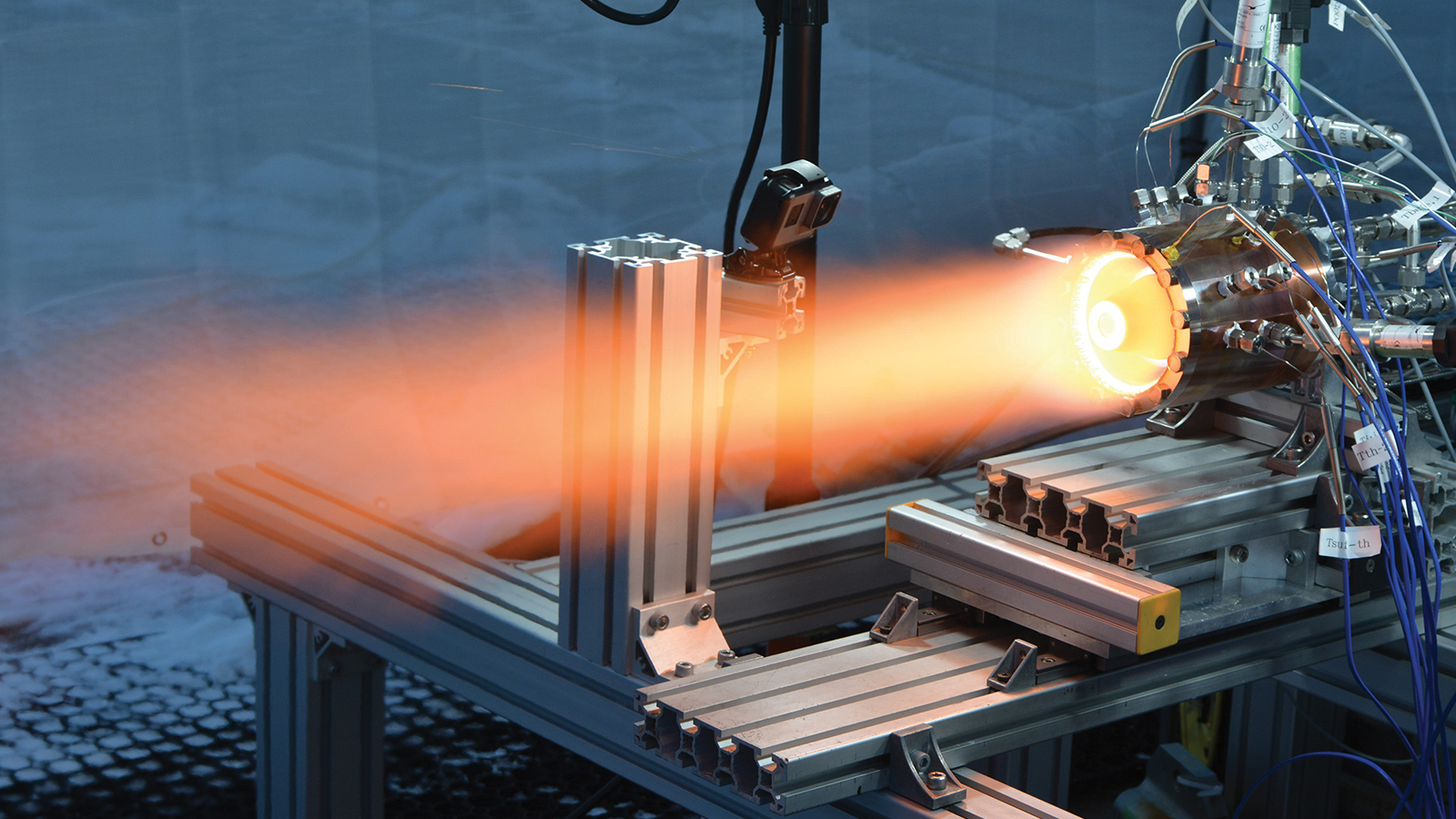Stay Up to Date
Submit your email address to receive the latest industry and Aerospace America news.
The Pressure Gain Combustion Technical Committee advances the investigation, development and application of pressure-gain technologies for improving propulsion and power-generation systems and achieving new mission capabilities.
For propulsion and power-generation systems, detonation-based pressure-gain combustion has the potential to deliver higher fuel efficiency at reduced weight and footprint. This makes PGC attractive for terrestrial systems, as well as aerospace applications such as rockets and hypersonics. Recent investments have enabled quantitative flow and combustion diagnostics and improved the technology readiness level by transitioning laboratory concepts toward practice. Government, industry and academic institutions around the globe this year continued to advance PGC to a new and higher technical level.
The U.S. Air Force, Navy, Department of Energy and NASA continued to support several PGC research efforts. In June, the Air Force Research Laboratory and Innovative Scientific Solutions Inc. conducted a ground demonstration of a rotating detonation engine, or RDE, capable of propelling a Long-EZ aircraft. This effort demonstrated adequate thrust for takeoff and cruise operation, and acoustic measurements confirmed a safe noise level for ground operations.
The Department of Energy’s National Energy Technology Laboratory funded RDE development efforts by Aerojet Rocketdyne with teammates from Purdue University, University of Michigan, University of Alabama, University of Central Florida and Southwest Research Institute. In May, the campaign conducted hot-fire testing of a 30-centimeter diameter natural gas and air RDE at Purdue’s Zucrow Labs. Using multiple hardware configurations, the team demonstrated detonation combustion with a low loss injector and an exhaust diffuser designed to condition the exit flow for a downstream turbine.
NASA researchers continued in-house numerical investigation and optimization efforts in resonant pulse combustion and RDE systems for application to gas turbine engines. Additionally, under an internal Center Innovation Fund, a rotating detonation rocket engine nozzle optimization study and high-level rocket system benefits model development were initiated. In May, NASA solicited development proposals under Phase I Rocket Engine and Research, Development, Demonstration, and Infusion Early-Stage Innovations grants programs.
In August, researchers at Purdue University reported development of an axial and outflow radial turbines suitable for small core RDEs. In an effort to assess the performance of the turbine-combustor interactions, an optically accessible test rig was developed in cooperation with Spectral Energies.
In February, University of Michigan researchers identified and quantified regions of parasitic and commensal secondary combustion that affect the detonation wave in an RDE and identified the presence of secondary waves. Secondary combustion and secondary waves couple together, ultimately changing the stability and structure of the primary detonation wave.
In March, a team of researchers at the University of Alabama used time-resolved particle image velocimetry to measure the exhaust flow of an RDE operated on methane and oxygen-enriched air mixtures and demonstrated that the circumferential flow oscillations decreased by operating the RDE at high pressures, and a downstream diffuser further homogenized the flow for turbine applications. Activities at the Naval Postgraduate School from April through June focused on RDE parametric studies of combustor inlet area ratios, channel width and back-pressurization conditions to determine pressure-gain performance. This was done through the application of equivalent available pressure which is an important parameter in evaluating the performance of a PGC device.
In Japan, Nagoya University, Keio University, Institute of Space and Astronautical Science of Japan Aerospace Exploration Agency, and Muroran Institute of Technology fabricated the preflight model of a detonation engine system toward a sounding-rocket spaceflight test scheduled for August 2020.
At Tsinghua University in Beijing, the effects of a perforated wall on the hydrogen/air rotating detonation were studied emphasizing analysis of acoustics and propagation stabilities. Experiments were also performed on kerosene/oxygen-enriched air rotating detonation. Using an Eulerian-Lagrangian two-way coupling model, a 2D simulation of two-phase kerosene-air rotating detonation was conducted using high-order numerical methods.
Related Posts
Stay Up to Date
Submit your email address to receive the latest industry and Aerospace America news.




